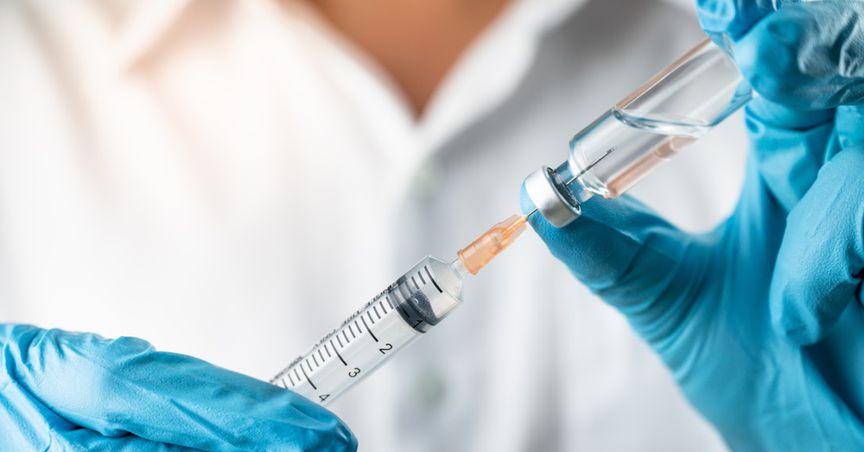Summary
- As of now, there are more than 5.2 million confirmed cases of COVID-19, and over 337k deaths have been reported.
- There is no approved vaccine for COVID-19 although dozens of candidates are under clinical development.
- Amid this crisis, remdesivir by Gilead offered hope and became the first medicine to be cleared for the treatment of COVID-19.
- Veklury® (remdesivir) has been approved in Japan for severe COVID-19 treatment.
- Antiviral drug remdesivir demonstrated positive results in its early clinical trial and helped patients to recover faster and return home in 11 days compared to 15 days for patients receiving a placebo.
- Remdesivir blocks replication of SARS-CoV-2 virus by mimicking a part of viral RNA.
Novel Coronavirus (2019-nCoV) was first identified in China in December 2019. In February, the World Health Organization (WHO) named the disease caused by the virus as COVID-19.
The front liners still need an established treatment for the COVID-19 as scientists are in a race against time to develop a vaccine to combat this deadly virus. So far, there is no approved drug for COVID-19 by the Food and Drug Administration (FDA), although lots of candidates have been proposed, and many are currently under clinical development. This turmoil has affected many lives across the globe, and more than 337k fatalities have been reported to WHO.
MUST READ: Are We Very Close to the Breakthrough for COVID-19 Vaccine?
COVID-19, that has led to public health and an economic catastrophe, has brought the economy to its knees, putting millions of persons unemployed while impacting several businesses harshly, as the governments across the world came up with ways to tackle this deadly virus. Amid this turmoil, early clinical study outcomes for Gilead’s antiviral drug, remdesivir has given a ray of hope.
In this article, we will acquaint you with how Gilead’s remdesivir works and aims to put the brakes on the infectious disease, COVID-19.
Brief about Gilead
US-based biopharmaceutical player Gilead Sciences Inc (Nasdaq:GILD) is headquartered in California and is into development and commercialization of innovative treatments for the diseases having unmet medical need. The Company has its operation in over 35 nations across the globe.
Remdesivir, by Gilead, showed faster recovery of patients (11 days) compared to 15 days for patients receiving a placebo. The drug obtained an emergency use authorization (EUA) from the FDA, which permits it to be used more widely outside the clinical studies. However, Remdesivir is not yet approved for use in COVID-19 patients across the US.
According to the press release by Gilead, remdesivir (Trade name: Veklury®) has been approved by the Japanese Ministry of Health, Labour and Welfare (MHLW) as a treatment for SARS-CoV-2 infection under an exceptional approval pathway. This exceptional authorization in Japan was given because of the current situation of COVID-19 crisis and references the EUA in the US.
Some studies demonstrate that Gilead’s remdesivir, the first medicine cleared for the treatment of COVID-19, primarily benefited healthier patients who were not dependent on ventilators or any heart-lung bypass machines. This medicine has also proven to increase the survival rate in the patients.
DO READ: Gilead’s remdesivir reports positive results for COVID-19 study
How remdesivir Works to Combat COVID-19 Inside the Human Body?
Although researchers across the globe have developed several therapies to confront the COVID-19 pandemic, out of those no specific method has shown effective relief from the deadly disease. However, developing such antiviral drugs is a challenging task, for a few reasons:
When a virus has entered a cell, it entirely depends on the machinery of a cell to reproduce. Therefore, the drugs that are developed to target the virus could also have some harmful impacts on the host cells. Generally, viruses have genetic material, either a DNA or RNA.
The DNA viruses have a lower mutation rate as compared to RNA viruses due to differences between the ability of the virus to confirm its genome at the time of replication.
Though, while virus responsible for COVID-19 is an RNA virus, it also has a high mutation rate than DNA viruses. The RNA of RNA viruses encodes RNA-dependent RNA polymerase (RdRp) enzyme.
How does a viral Infection take place?
It is a well-known fact that viruses cannot proliferate without using a living cell’s protein-making machinery. Thus, firstly these need to enter in a healthy live cell.
The severe acute respiratory syndrome coronavirus 2 (SARS-CoV-2) which causes COVID-19, have a spiky proteins shell allowing them to bind to healthy live cells.
After coming in contact with the live-cell, the virus enters inside and releases a strand of RNA a string of genetic code that has instructions to make similar copies of the virus. In host cell ribosomes are equipped for identifying and reading genetic material. When the RNA of a virus comes in contact with the ribosome, it produces viral protein. These proteins are required to make similar copies of the viral RNA, including other parts of the virus.
The viral parts use processes in the host cell to combine, forming a complete virus. After assembling completely, the virus may exit the cell to find other healthy cells and restart the process again.
ALSO READ: Virus Mutation, Second Wave of Infection and Latest Vaccine Developments
What does remdesivir do?
Remdesivir is a broad-spectrum antiviral drug developed by Gilead that was initially studied for the treatment of Ebola. The FDA has given emergency approval for the use of remdesivir in the US, which is not a formal approval of using the drug.
Remdesivir works by stopping the replication of SARS-CoV-2 virus by mimicking a part of viral RNA.
The antiviral drug remdesivir mimics a part of the viral RNA, and during the process when the virus makes copy the drug inserts itself into the RNA strand and prevents any further copying. This way drug leaves the RNA strand inadequate and unable for formulating new critical viral parts. The virus proliferation is not possible due to inadequacy of RNA strand processing.
The entire replication process slows down due to obstruction by the drug. This suggests a small number of viruses are assembled. The virus having partial RNA cannot replicate in other cells, and hence the process of further transmission could be slowed down.
INTERESTING READ: Latest Initiatives from AstraZeneca And Gilead Sciences to Seek Cure for Covid-19
On 22 May 2020, GILD stock closed the day’s trade US$73.34 fell by 0.22% with a market cap of US$91 billion.





